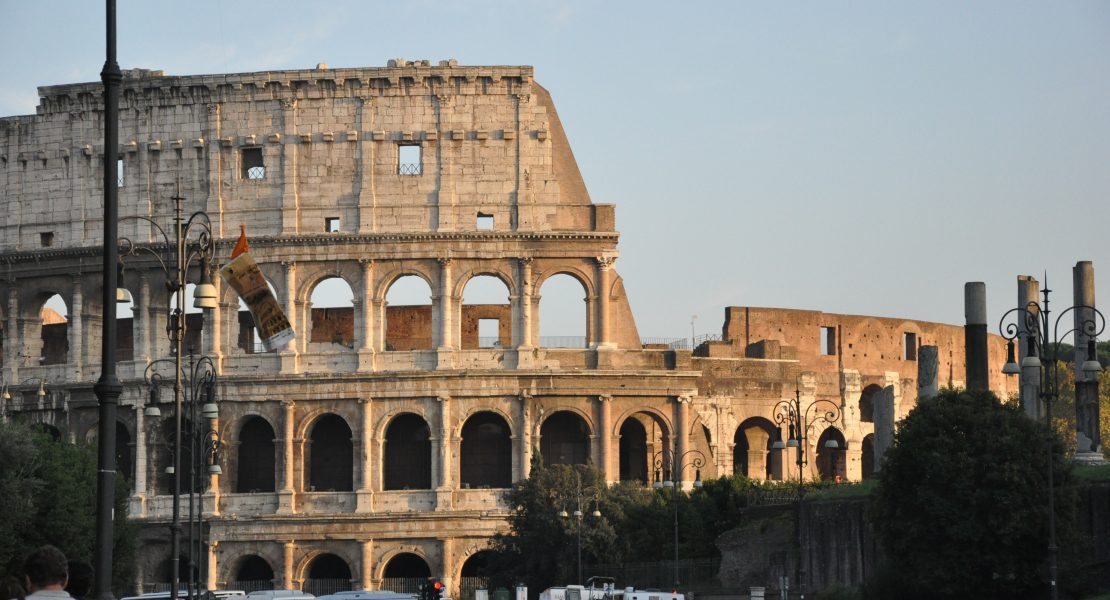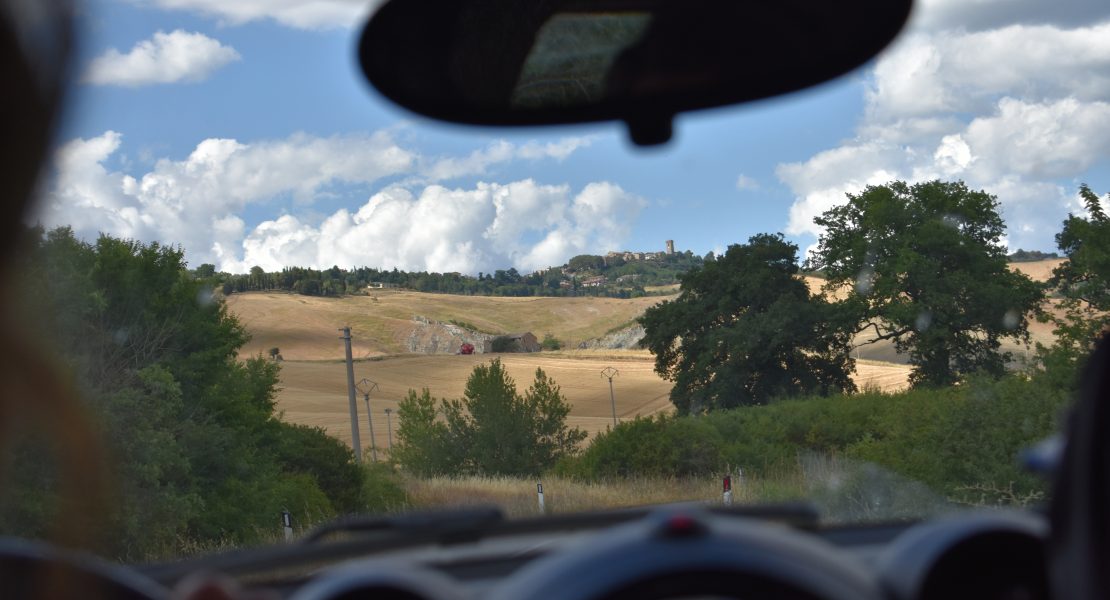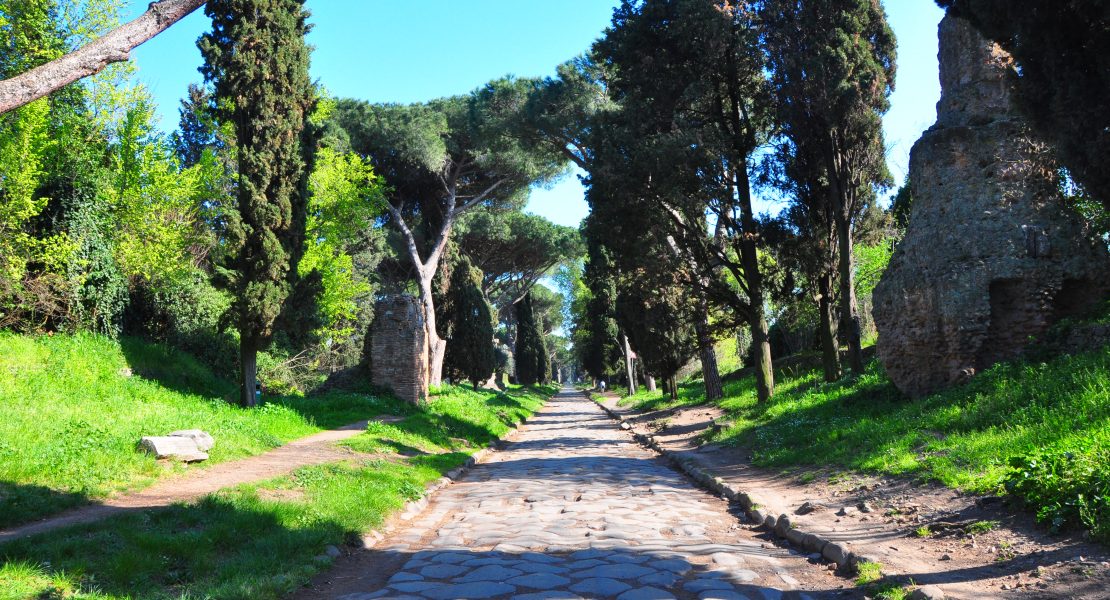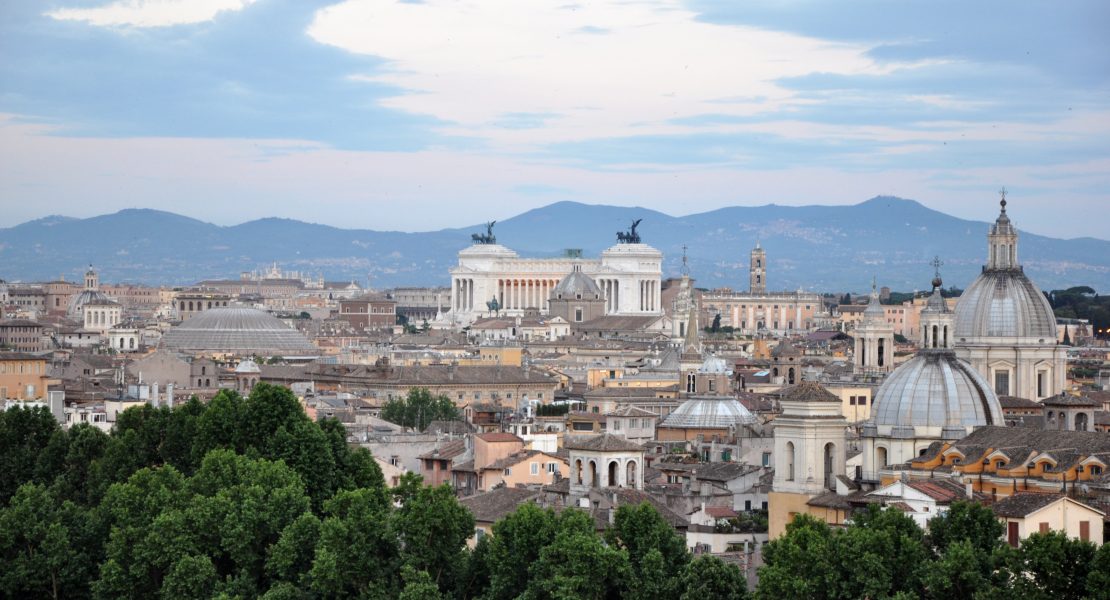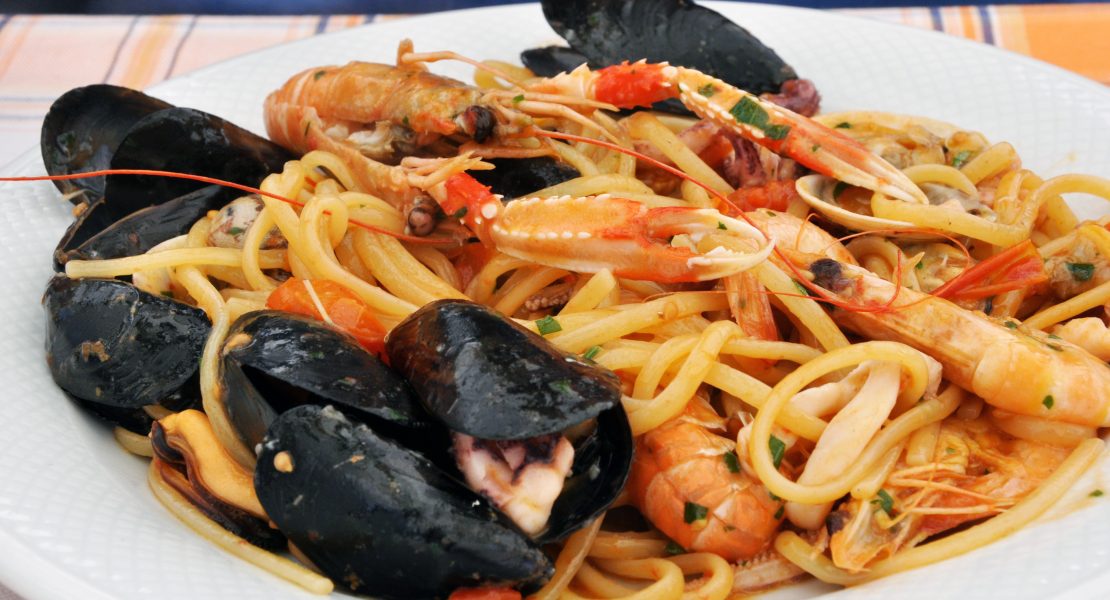
Check out (my) verdicts for Rome’s most local, best-value places for coffee, gelato, wine, cucina romana and more in my article for the Guardian’s travel section, “Eat Like a Local in Rome.” Agree with my choices? Disagree? Feel free to comment below!
Got an iPhone? Now, an App for Rome’s Archaeological Sites

Who ever said Italy’s Ministry of Cultural Heritage and Activities was behind the times? On July 1, they launched an iPhone application to help tourists, and archaeologically-engaged locals, find their way around the city’s top sites.
Called the i-Mibac, the application offers information about opening hours and prices, as well as an expert’s overview. Most exciting, though, is that you can book your tickets straight from your iPhone — particularly helpful at sites like the Colosseum, where the line can stretch around the block. The app can be downloaded, for free, at the apps store. Right now, it works on the iPhone, iPad and iPod Touch, but the ministry says it’s working on making it available on other smartphones, too.
You might also like:
Travel Virtually to Rome’s Top Sites
La Notte di Caravaggio: On Saturday Night, Art for Free
There may be no artist better suited to the night than Caravaggio — the tormented Baroque painter famous for his dramatic, almost theatrically-lit paintings.
And on Saturday night, Rome is offering up its Caravaggios to the public. From 7pm on Saturday, July 17 until 9am on Sunday morning (yes, all night), four different sites will be open and free: the Borghese Museum (right now, ordinarily a €10.50 entrance), with its "Boy with a Basket of Fruit" (above), "Sick Bacchus," and "Madonna of the Snakes," among other pieces; the Church of San Luigi in Francese, home to Caravaggio's first major commission, the three frescoes of St. Matthew; the Basilica of Saint Augustine, with its Madonna of Loreto; and the Basilica of Santa Maria del Popolo, with its Crucifixion of St. Peter and Conversion of St. Paul (open only until 1am).
Just be prepared for a queue at the Borghese, where Romans are most likely to flock… although the later you go (or the earlier Sunday morning), the more likely you are to to have the museum to yourself.
Less than an Hour from Rome, Ostia Antica’s Ruins

Ostia Antica, the ancient town just 20 miles from Rome, might not have the dramatic past of its Vesuvius-vanquished neighbors to the south. But if your interest is in getting a feel for the daily lives of the Romans, not the notoriety of a particular disaster, then head to Ostia Antica.
Before being abandoned in the 9th century, the ancient Roman city had 50,000 inhabitants. Today, the vast site is chock-full
of the remnants of houses, restaurants, and bars. There’s even a hotel. It’s still two stories tall — and you’re still allowed to climb the ancient stairs to the second floor.
 Like other high-quality ancient sites, if Ostia gives you one thing, it’s the sense of how little times have really changed. Not only could visitors to town stay in a hotel (with the more expensive, seaside-view rooms those on the higher floors), but they could walk across the street for a tipple at the bar and restaurant. Here’s an image of that bar, left, complete with the marble shelving for various bottles and, above it, a fresco depicting exactly what the restaurant served — an ancient predecessor to the current menus with photos you see in Rome today. (Although, avoid those).
Like other high-quality ancient sites, if Ostia gives you one thing, it’s the sense of how little times have really changed. Not only could visitors to town stay in a hotel (with the more expensive, seaside-view rooms those on the higher floors), but they could walk across the street for a tipple at the bar and restaurant. Here’s an image of that bar, left, complete with the marble shelving for various bottles and, above it, a fresco depicting exactly what the restaurant served — an ancient predecessor to the current menus with photos you see in Rome today. (Although, avoid those).
And you can get a sense of ancient advertising. Take this shop, its floor a black-and-white mosaic of fish and seafood. What was this shop? The fish-monger, of course.
You can get to Ostia by taking the Metro, line B, to Piramide, then following the signs to the Roma-Lido station. From there, you can get the train to Ostia Antica, using the same metro ticket. For a map, click here.
Nuovo Mondo: The Best Pizzeria in Testaccio
Most guidebooks to Rome vaunt Da Remo as Testaccio’s best pizzeria, noting its big crowds and classic Roman pizza. Well, okay. Da Remo’s pretty good.
But if you’re heading out to Testaccio anyway, my advice: Go to Nuovo Mondo instead.
I had a capricciosa on my last visit there, and it was great. The crust was thin and crispy, the ingredients fresh, and the sauce almost-perfect, if a little uneven. And if you’re looking to get a table within the first fifteen minutes (not a likelihood at places like Da Remo), well, there were still empty seats by 9pm on a weeknight. And (again, pretty shocking for a pizzeria), the waiters were actually friendly. Okay, maybe it was because I was a single woman, eating alone — a rare thing in Italy. But still.
If that weren’t good enough, the bill was even better: €12 for a pizza, three fritti, and water.
The downside is the decor. With somewhat awkwardly low plastic chairs outside, bright orange tables, and motel-style prints decorating the walls inside, it’s no-frills. The place looks like it hasn’t been redecorated in the 45 years it’s been around. But with pizza this good, it doesn’t need to be.
Nuovo Mondo. Via Amerigo Vespucci 15. Closed Mondays. For a map, click here. Note: If you’re visiting Rome for the first (or even second, or third) time, the prospect of getting out to Testaccio (a working-class neighborhood south of Circo Massimo) might seem a little daunting. But it’s easy. You can take the “B” line metro south and get off at Piramide, just 2 stops from the Colosseo stop. Or grab the 3 or the 75 bus, which also stop in the Colosseum area. From there, it’s a short walk to Nuovo Mondo. And the neighborhood’s always lively and feels safe, even at night.
Can You Drink from Rome’s Water Fountains? Really?
There’s one question I often get in Rome: Is the water — especially from all those, yuck, public fountains — safe to drink?
The short answer: Yes. And it tastes good, too.
Rome’s never been a city limited in water usage, as I wrote in my recent Guardian piece. By the first century A.D., thanks to the aqueducts, the city had 1,000 liters of water available per person, per day. Today, there are 500 liters available. Per family. Still, though, more than enough.
And lots of that water still freeflows out through the fontanelle (little fountains) placed around the city. (You might also hear these fountains called nasoni, after their nose-shaped spigots). The water’s brought in from outside the city. It’s safe. Fresh. Super-cold. So do as the Romans do: Save your €1.50 and refill your water bottle at the nasoni. There are 2,500 in the city, so you shouldn’t have trouble finding them.
[Update, 2013: And just in case you did have trouble… there’s now an app for finding fountains in Rome’s city center! Oh, how things have changed in a mere couple of years.]
One last tip: If you plug up the end with your thumb, the water will spurt out of a handy hole on the top, providing you a makeshift water fountain. See, modern Romans are good engineers, too! Well, sometimes.
Rome’s Saldi Are Here, Rome’s Saldi Are Here!
For those of you in Rome who don’t live under a rock, you’ve probably noticed that the saldi — or sales — have arrived. And for those visiting, you might be wondering what all of the excitement, and the overcrowded stores, are about.
Unlike in, say, the U.S., Rome’s stores don’t have to tend small sales year-round. Instead, they have big, city-wide sales twice a year: post-Christmas, and July.
The first few days of the saldi can be crazy. The already-overworked-and-underpaid salespeople (seriously: I went into a popular shoe store the other day where there were 10 shoppers and just 1 worker, who had to get the shoes, make the sales and ring everything up by herself) are even more frantic. The line to try clothes on at Zara, always long, gets longer. The wait to get the attention of a salesgirl at Sisley, usually tough, becomes all but impossible.
But, but, but. The sales DO tend to be pretty good (often up to 50 percent off). And if you can’t bear to brave the crowds right away, don’t fear: The saldi will go on for another 5 or 6 weeks. They’ll keep cutting prices, too. Just remember that with a bunch of discerning Italians having come in before you, the good stuff will probably be gone.
The Swimming Pool in the Colosseum’s Shadow

I just wrote a piece on the Colosseum’s swimming pool for the Guardian’s travel section. Suffice it to say that this was some of the best research I’ve ever done for a story. Check it out!
6 Alternative Modes of Transport on a Hot Rome Day

When the temperature’s 90 degrees Fahrenheit (as it already is in Rome) and you need to get somewhere, the thought of taking the sticky, crowded, sometimes-completely-unventilated metro or bus is just unbearable. And a cab’s just cheating.
From best to worst, 6 alternative ways to get around Rome — while staying cool. (And no, not necessarily the “wow, you’re really awesome” kind of cool).
 6. Walking. Sometimes, the simplest solution is the best. Rome is not that big. So. Just. Walk. Bring a big bottle of water (you can refill it at any of the nasoni, or little fountains, around the city). And please forget the backpack: It’s hot, bulky, hot, and really, when was the last time you were in a city and so far from civilization that you actually needed that emergency pack of granola bars? Also, it’s hot.
6. Walking. Sometimes, the simplest solution is the best. Rome is not that big. So. Just. Walk. Bring a big bottle of water (you can refill it at any of the nasoni, or little fountains, around the city). And please forget the backpack: It’s hot, bulky, hot, and really, when was the last time you were in a city and so far from civilization that you actually needed that emergency pack of granola bars? Also, it’s hot.
5. The scooter, or as the Italians say, motorino. Zipping around on a motorino with the wind whipping your face is pretty much meant for warm days. You can help your local-cool factor by donning big, dark sunglasses, unnecessarily revving up the engine at brief stops, and saying “Ciaooo, ciaoooo” to local passersby.
There are, however, numerous downsides. Like the scary, scary Rome traffic, which means that I do not recommend this for those who have just arrived in Rome and are still having trouble timing how to cross the street. (Seriously. I am not liable for any accidents you or your loved ones may have if you don’t heed this advice. My lawyer agrees). Also problematic is the difficulty, for women, of wearing a skirt or dress and not blinding every poor person we pass, not that Roman men really seem to mind. If you feel like you are mature, cautious, skilled, sober, and insurance-policy-protected enough to rent a motorino, check out Bici & Baci or Treno e Scooter for rentals.
4. Biking. It’s easy to get a bike in Rome: You can either rent one from a shop, or take advantage of the city’s new bikesharing program. There are 19 kiosks around the city, and the price is just €.50/hour. Just stop by a ticket office at a major metro stop, like Termini, for a bikesharing card. It’ll cost you €5, but it’s good for 10 hours of riding. Pass that card over the post that your desired bike is locked to, and presto! Your bike is released. It’s like magic. There isn’t any magic, though, that will save you from the aggression of Roman drivers, so please reread my caveat to #3. Seriously. 
3. Hop-on, hop-off boat ride. Those who do this seem to think they’ll be getting a tour of the city. While I haven’t done one myself, I can’t imagine that would be the case; not only are the tours taped, but the Tiber is walled–meaning you can’t see hardly anything. So why do it? Well, solely for the purposes of getting from Point A (like Ponte Castel Sant’Angelo) to Point B (Ponte Risorgimento). The vessels for some of the boat lines even have air-conditioning. Woo! Check out the Hop-On, Hop-Off Cruise in Rome for information.
2. Walking… with your own personal cooling system. I wasn’t aware until Googling “personal cooling system” just how many of these there are. There are water-filled neckbands. Cooling shirts. A hand-held electronic cooling device. Even something known as a “belt mister,” which promises to envelop you in a mist that will drop the temperature around you by 30 degrees. This belt also promises to be “inconspicuous”…because oh, yeah, walking in your own cloud of cold mist is just something you were born with.
1. The Segway. You don’t get up to speed on these things, which eliminates the speed-equals-breeze quality of #5, or really get to go that many places, which you can with #2, 4, 5 or 6. When you’re on the street, you’re a slow-moving traffic menace, and when you’re on the sidewalk, you’re a complete annoyance to every pedestrian trying to get somewhere. (I dub you “speed bumpkin.”) Also, don’t buy it when people say how safe it is: I met a woman the other day who’d twisted her ankle when she briefly forgot how to stop it, the Segway went faster, and rammed her into a car. (Okay, okay, I guess nothing can be completely fool-proof). While on the Segway, though, you are, at least, able to stand completely still and still toodle through the city. In terms of laziness, it’s like one step away from armchair traveling. To really “up” the cool factor, bring along your personal cooling system. For more information, Google this on your own. That’s how against Segways I am. 
My New Favorite Gelateria: Ciampini
I'm doing some research for an upcoming story, and this research includes finding Rome's best gelato. (There could be worse things).
Thus far, I've been pretty good: Ordering a "coppa piccola" of gelato, tasting, and throwing half out.
But at the gelateria Ciampini, even though I'd already had two frozen treats, I couldn't keep myself from gobbling the whole gelato down. I tried chestnut, mixed berry, and peach with pinenuts. Each one was super-creamy, but with bits of their namesakes mixed in (including actual, chewy bits of chestnut, and whole pinenuts). Yum, yum, yum. I had a stomachache afterwards, but it was so worth it.
(Since then, I've been back to Ciampini a number of times — and I still think their gelato is some of the best in Rome).
Ciampini. Piazza San Lorenzo in Lucina 29, in between the Spanish Steps and the Pantheon. Click here for a map.
You might also like:
The Best Gelato, and Best-Kept Secret, in Rome

